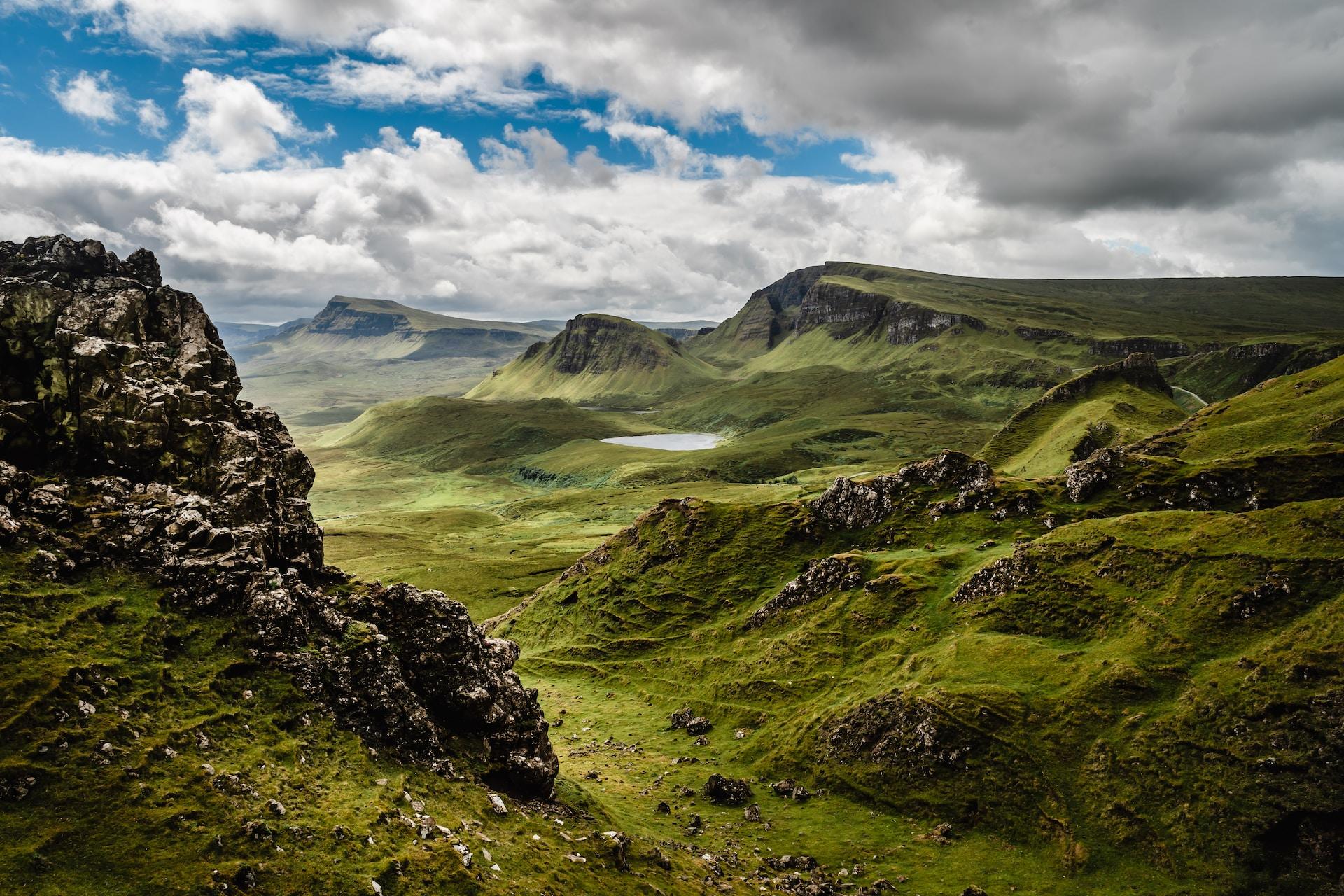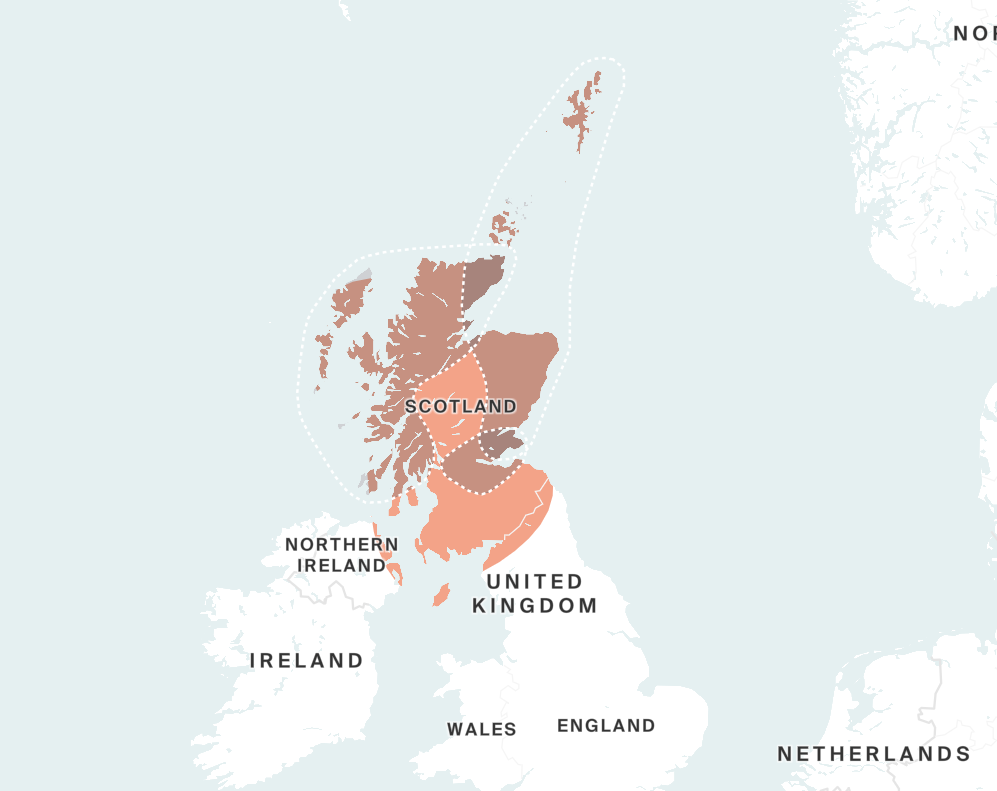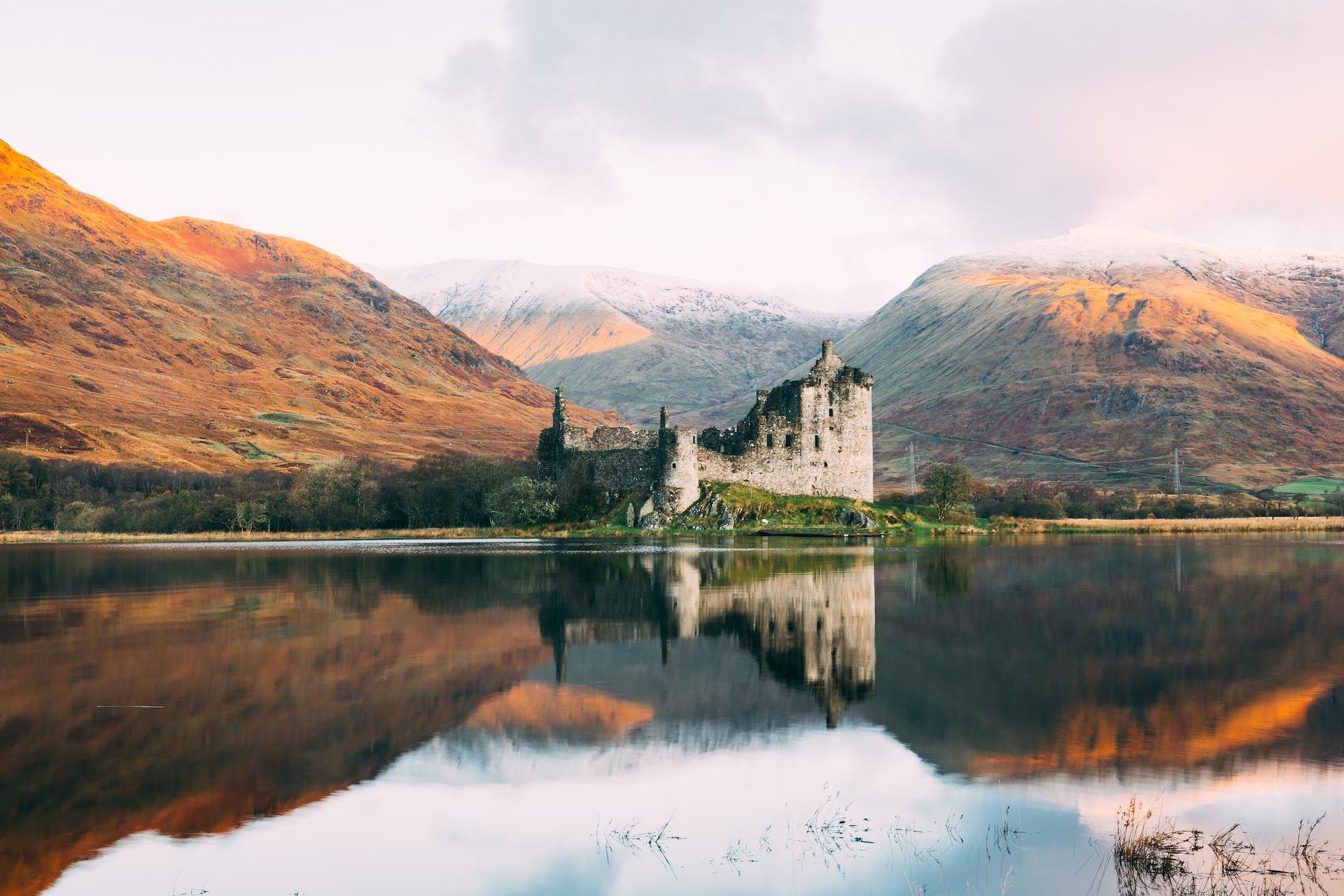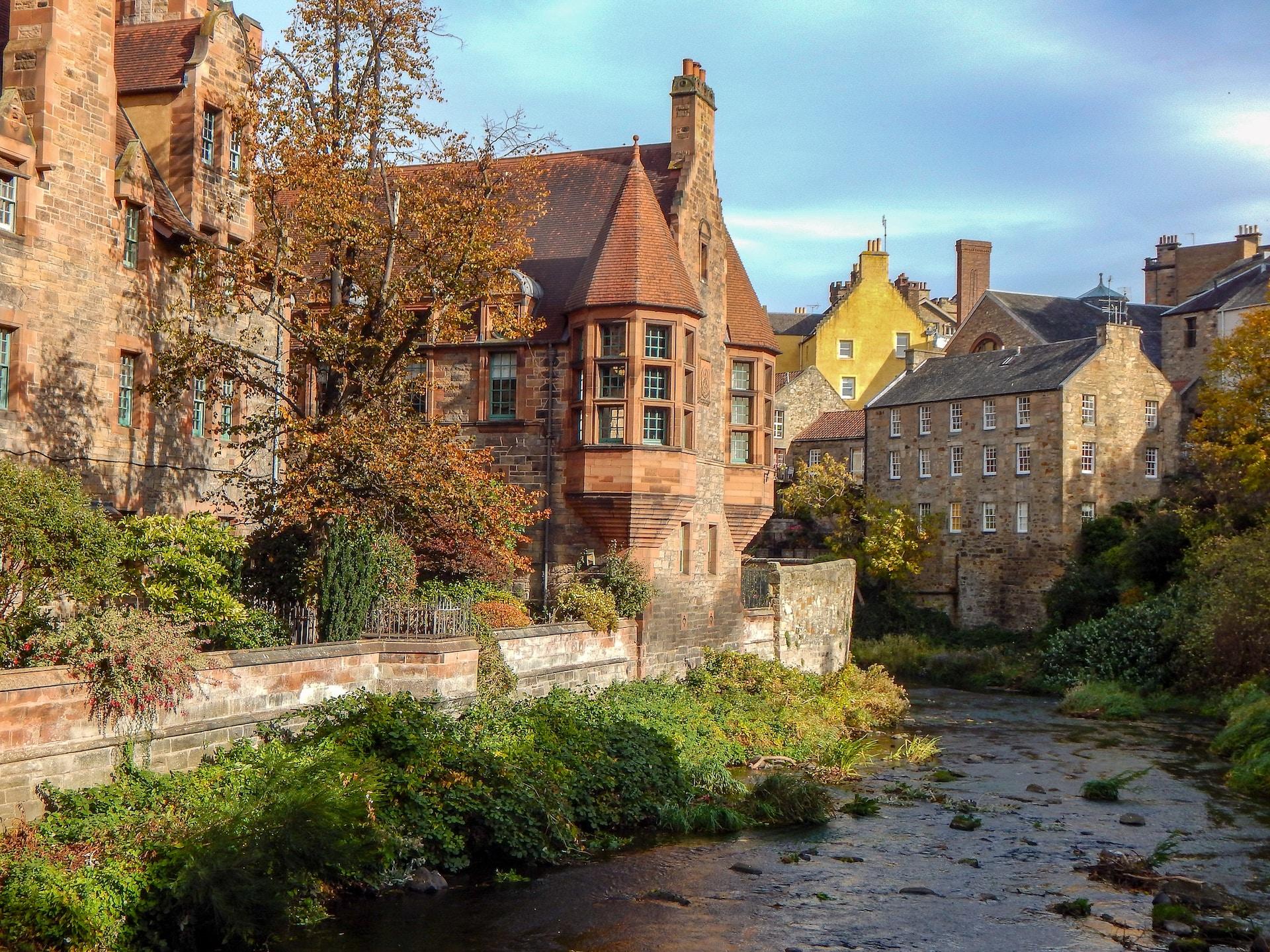What is Scotland DNA Ethnicity on Ancestry?
The results of our AncestryDNA tests may sometimes be what we expect or on occasion may be a big surprise. Either way, often we need a little more information regarding some of the regions that arise in our ethnicity estimates.

One region that is not at all uncommon is the Scotland DNA region. Those who still live in this region already understand all about its history and culture. There are others, however, who may never have even visited or in fact been aware that they have ancestors from that area.
In this post we will go into more detail with regards to the history, geography and culture of the Scotland region. We will also discuss what it means to be from this region and how easy or difficult it might be to trace our roots in the Scotland Region.
What Is the Scotland DNA Region?
The Scotland DNA region as the name suggests focuses on the British Isles nation of Scotland. This region does also bleed further south into northern England to the west into eastern Northern Ireland and far north into the Scottish islands.

Scotland DNA Region Subregions
There are three subregions to the Scotland DNA region some of which also have additional communities that further condense a potential origin location for researchers trying to find out more about their ancestors from this region.
Northeast Scotland & the Northern Isles
The Northeast Scotland & the Northern Isles subregion is located in the extreme northeast of Scotland and far to the north encompassing the Orkney and Shetland islands. It has four additional communities which include:
- Banff & Buchan
- Fife & Angus
- Moray & Gordon
- Orkney & Shetland
Scottish Central Lowlands
The Scottish Central Lowlands as the name suggests focuses on the more southerly part of Scotland. It includes major cities such as Edinburgh, Glasgow and Stirling. This is a small subregion with no additional communities listed at present.
Scottish Highlands & Islands
The Scottish Highlands and Islands is a large region that covers the northwestern area of the country of Scotland which consists of mountainous areas. It also encompasses the Scottish Islands along the country's northwest coast. There are ten subregions that make up this region which include:
- Argyll & Bute
- Caithness
- Isle of Skye
- Lewis & Harris
- North Kist, South Uist & Rum
- Ross & Cromarty
- South Sutherland, Scotland
- Sutherland
- Sutherland & Caithness
- The Outer Hebrides
Scotland Region History
Scottish Prehistory
It is thought that humans may have been present in Scotland during the Mesolithic Period, but repeated periods of glaciation likely destroyed all evidence of this. As a result, the first recorded information regarding the earliest peoples of this region dates back to after the last Ice Age.
Around 12,800 years ago hunter-gatherer groups arrived in Scotland roaming the lands opened up by the retreating glaciers. This was a time where the land was covered in forests and bog-land leaving the most common form of transport boats.
First Settlements
It was around 9,500 years ago that permanent houses started to be built in Scotland with the first organized villages dating back 6,000 to years ago. An example of this would be the well-preserved village of Skara Brae on Orkney. This village may have seen habitation as early as 3180 BC.
The Romans
Society developed in Scotland for thousands of years and the first written mention of the region dates back to 320 BC by a Greek sailor Pytheas. He referred to the region in the north tip of Britain as Orcas, a term that later inspired the naming of the Orkney islands.
The Roman Empire came to the British Isles in 43 AD It only took a few decades for the Romans to conquer most of the British Isles, establishing a presence for almost four centuries. The Scottish region however was populated with fierce fighters who proved problematic to the Romans.
The Roman conquest of Britain was never fully completed thanks to the Scottish who prevented the Romans from establishing political control in the region. It wasn’t until 79 AD that the Romans began their assault on the Scotland region and initially, they had the same success as they had in England. Roman fortresses were built as far north as the Moray of Firth.
However, it did not take long for the Romans to abandon their advance and even withdraw to the lowlands area. In fact, by 117 AD the Romans’ line of control fell back to the area between River Tyne and the Solway Firth. This would lead to the building of Hadrian’s wall separating northern England from Scotland.
The Kingdom of Scotland
Starting in the sixth century, the area that is now Scotland was divided into three separate areas: Pictland, which was a patchwork of small lordships in central Scotland The Anglo-Saxon Kingdom of Northumbria, which had conquered southeastern Scotland Dál Riata, which included territory in western Scotland and Northern Ireland

Gaelic influence over Pictland and Northumbria was caused by the large number of Gaelic-speaking clerics working as missionaries. One such cleric was Saint Columba who operated in the sixth century on the island of Iona.
The Vikings
The Vikings began to raid Scotland in the eighth century. Although the raiders sought slaves and luxury items, their main motivation was the acquisition of land. Norse settlements first arose in northwestern Scotland, however they eventually conquered many areas along the coast.
In the ninth century, the Norse threat allowed a Gael named Cináed mac Ailpín later known as Kenneth I to seize power over Pictland. This would establish a royal dynasty to which the modern British monarchs can trace their lineage.
The kingdom of Cináed and its descendants from a base in eastern Scotland north of the River Forth and south of the river Spey expanded first to the south, into the former Northumbrian lands, and then to the north into Moray. Around the turn of the millennium the first towns began to be established.
In the twelfth and thirteenth centuries, much of Scotland was under the control of a single ruler. It was during this period that immigrants from France, England and Flanders steadily started to arrive, creating a more diverse culture.
War With England
Around the twelfth and thirteenth centuries, the war with England started the growth of a united Scotland. King David I and his successors centralized royal power in the region and united mainland Scotland. This would lead to tensions and several attempts by Scottish kings to take advantage of English internal political turmoil.
The wars and conflicts with England would continue for years and saw periods of English rule and battles for Scottish independence. Ultimately the two nations would be united under one monarch when James VI of Scotland ascended to the English throne in 1603 upon the death of Elizabeth I, his cousin.
How Did You Get Scotland Region DNA?
If you already know that you had family who came from Scotland or any of the bordering states, then you know why you have Scotland region DNA. If this result came as a surprise, you may not know how exactly you came by DNA from this region.

If you have a sizable percentage of DNA from this region, then it is likely you have an ancestor who was born in or close to the country of Scotland.
Is the Result Accurate?
When it comes to ethnicity estimates, the higher the percentage you have from a certain region the more likely it is to be accurate. If your percentage is low, however, then it is harder to pinpoint exactly where your most recent ancestors came from.
A low result could mean a distant ancestor from that region. It is best to focus on your highest rated region's matches to determine where your ancestors came from more recently. A low percentage can often be hard to locate because the ancestor in question could be many generations back in your tree.
How to Research my Ancestry from These Regions
The results of a DNA ethnicity test are of course a great place to start, especially if there is an unexpected result found in the report. As always of course DNA cannot tell the whole story and we need to actually do the research work.
A percentage on an ethnicity estimate means very little unless you follow through and start building up your family tree. The relevant ancestors may be several generations back and it may take a lot of research to discover who they were.
If you have specific regions mentioned in your report, then you have a good idea of where your ancestor may have originated from. Ancestry DNA even has migratory information from some of these regions through to the final settlement places in the United States or elsewhere in the world.
Using Ancestry you may be able to determine not only who your ancestors were but where they are from in the region and perhaps the reason they decided to move.
Scottish Migration
The Scottish historically have been prolific in their immigration with notable Scottish communities settling in regions such as the United States, Canada, Australia, England, New Zealand, Ireland and to a lesser extent Argentina, Chile and Brazil.
The majority of this migration was based on finding a better life and escaping religious persecution. Opportunities for land in countries around the world drew thousands of immigrants away from Scotland which itself has limited availability were too good to miss out on.
Indentured servants from Scotland were also taken to the United States as punishment for crimes some associated with political conflicts with England.
Final Thoughts
The Scottish descend from a rugged peoples who resisted the Romans and fought hard for centuries against their neighbors in England. The spirit of independence lives on today in Scottish hearts as do many old traditions and beliefs.
Link To or Reference This Page
We spent a lot of time downloading, cleaning, merging, and formatting the data that is shown on the site.
If you found the data or information on this page useful in your research, please use the tool below to properly cite or reference Name Census as the source. We appreciate your support!
-
<a href="https://namecensus.com/blog/what-is-scotland-dna-ethnicity-on-ancestry/">What is Scotland DNA Ethnicity on Ancestry?</a>
-
"What is Scotland DNA Ethnicity on Ancestry?". NameCensus.com. Accessed on May 7, 2024. https://namecensus.com/blog/what-is-scotland-dna-ethnicity-on-ancestry/.
-
"What is Scotland DNA Ethnicity on Ancestry?". NameCensus.com, https://namecensus.com/blog/what-is-scotland-dna-ethnicity-on-ancestry/. Accessed 7 May, 2024
-
What is Scotland DNA Ethnicity on Ancestry?. NameCensus.com. Retrieved from https://namecensus.com/blog/what-is-scotland-dna-ethnicity-on-ancestry/.
